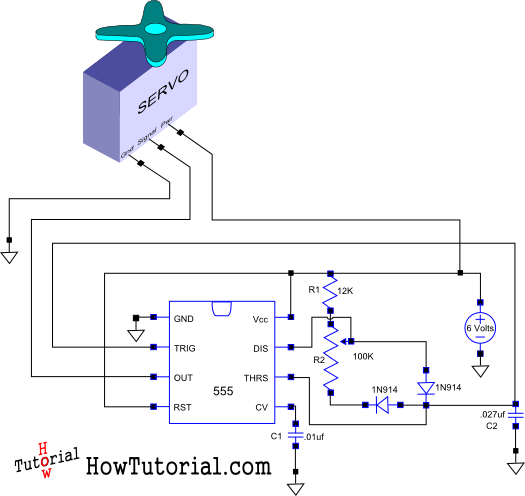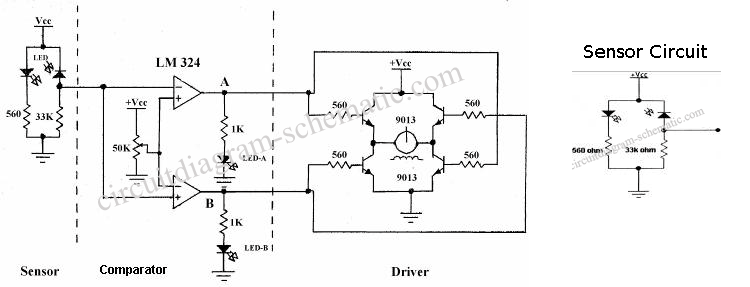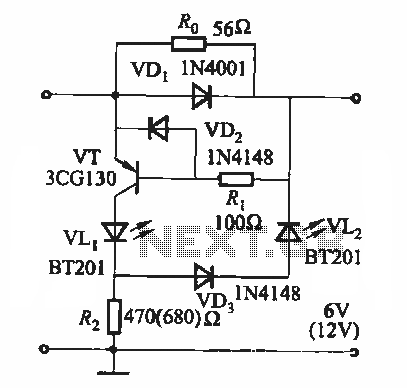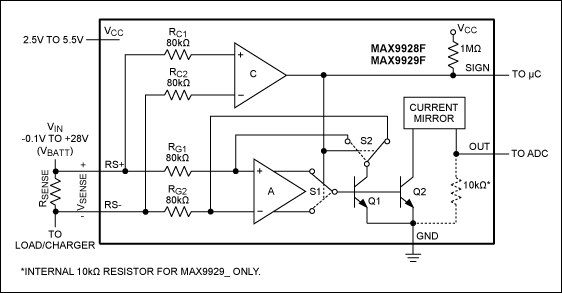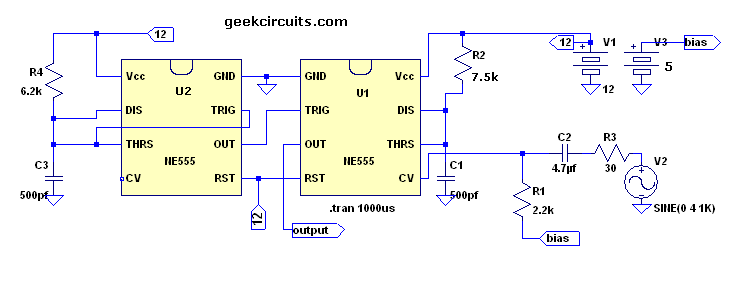
Simple fire alarm circuit using IC timer NE555
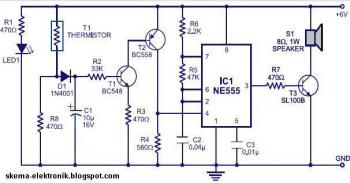
This is a simple smoke alarm circuit using a timer IC, the NE555. The circuit operates by illuminating a Light Dependent Resistor (LDR) with a lamp. When smoke obscures the light from the lamp, the resistance of the LDR changes, triggering the alarm. The NE555 (IC1) is configured as a free-running oscillator operating at audio frequencies. Transistors T1 and T2 control the NE555. The output from pin 3 of IC1 is connected to the base of transistor T3 (SL100), which activates the speaker to produce an alarm sound. The frequency of the NE555 is determined by the resistors R5 and R6, as well as the capacitor C2. When the thermistor heats up, it creates a low-resistance path for positive voltage to reach the base of transistor T1 via diode D1 and resistor R2. Capacitor C1 charges to the positive supply voltage, extending the duration of the alarm. A larger value of C1 results in greater positive bias at the base of transistor T1 (BC548). The collector of T1 is connected to the base of transistor T2, which supplies a positive voltage to pin 4 (reset) of IC1 (NE555). Resistor R4 is chosen to keep the NE555 inactive when there is no positive voltage present. Diode D1 prevents the discharge of capacitor C1 when the thermistor is connected to the positive supply voltage, which cools down and provides a high resistance path, also blocking the forward biasing of transistor T1.
This smoke alarm circuit utilizes the NE555 timer IC in an astable configuration, producing a continuous square wave output that can be used to drive an audio alarm. The LDR acts as a light sensor, and its resistance decreases when exposed to light, allowing for a threshold detection of smoke that obscures this light. The interaction between the LDR and the thermistor is crucial for the operation; when smoke is detected, the change in resistance triggers the alarm system.
The design incorporates transistors for signal amplification and switching. Transistor T1 (BC548) is responsible for amplifying the signal from the thermistor, while T2 serves to reset the NE555 timer, ensuring that the alarm remains inactive in normal conditions. The output from the NE555 is used to drive T3 (SL100), which in turn activates the speaker to emit an alarm sound, alerting users to the presence of smoke.
The choice of resistors R5 and R6, along with the capacitor C2, determines the frequency of the oscillation produced by the NE555, which is typically set within the audio range to ensure the alarm is audible. The capacitor C1 plays a critical role in timing; it determines how long the alarm will sound once triggered. The use of diode D1 is essential for maintaining the charge in C1, preventing it from discharging prematurely and ensuring that the alarm remains activated until the smoke condition is resolved.
Overall, this circuit is a practical application of the NE555 timer and demonstrates the integration of various electronic components to create a functional smoke detection and alarm system. Proper selection of component values and careful design considerations ensure reliable operation in detecting smoke and providing timely alerts.Here the simple file alarm circuit based timer ID NE555. The works is simple, the lamp give light to the LDR (Light Depending Resistor) as light sensor. When the light from the lamp covered with smoke then the LDR will change its resistance value and then activated the alarm. The IC1 (NE555) is configured as a free running oscillator at audio freq uency. The transistors T1 and T2 drive IC1. The output(pin 3) of IC1 is couples to base of transistor T3(SL100), which drives the speaker to generate alarm sound. The frequency of NE555 depends on the values of resistances R5 and R6 and capacitance C2. When thermistor becomes hot, it gives a low-resistance path for the positive voltage to the base of transistor T1 through diode D1 and resistance R2.
Capacitor C1 charges up to the positive supply voltage and increases the the time for which the alarm is ON. The larger the value of C1, the larger the positive bias applied to the base of transistor T1 (BC548).
As the collector of T1 is coupled to the base of transistor T2, the transistor T2 provides a positive voltage to pin 4 (reset) of IC1 (NE555). Resistor R4 is selected s0 that NE555 keeps inactive in the absence of the positive voltage. Diode D1 stops discharging of capacitor C1 when the thermistor is in connection with the positive supply voltage cools out and provides a high resistance path.
It also inhibits the forward biasing of transistor T1. 🔗 External reference
This smoke alarm circuit utilizes the NE555 timer IC in an astable configuration, producing a continuous square wave output that can be used to drive an audio alarm. The LDR acts as a light sensor, and its resistance decreases when exposed to light, allowing for a threshold detection of smoke that obscures this light. The interaction between the LDR and the thermistor is crucial for the operation; when smoke is detected, the change in resistance triggers the alarm system.
The design incorporates transistors for signal amplification and switching. Transistor T1 (BC548) is responsible for amplifying the signal from the thermistor, while T2 serves to reset the NE555 timer, ensuring that the alarm remains inactive in normal conditions. The output from the NE555 is used to drive T3 (SL100), which in turn activates the speaker to emit an alarm sound, alerting users to the presence of smoke.
The choice of resistors R5 and R6, along with the capacitor C2, determines the frequency of the oscillation produced by the NE555, which is typically set within the audio range to ensure the alarm is audible. The capacitor C1 plays a critical role in timing; it determines how long the alarm will sound once triggered. The use of diode D1 is essential for maintaining the charge in C1, preventing it from discharging prematurely and ensuring that the alarm remains activated until the smoke condition is resolved.
Overall, this circuit is a practical application of the NE555 timer and demonstrates the integration of various electronic components to create a functional smoke detection and alarm system. Proper selection of component values and careful design considerations ensure reliable operation in detecting smoke and providing timely alerts.Here the simple file alarm circuit based timer ID NE555. The works is simple, the lamp give light to the LDR (Light Depending Resistor) as light sensor. When the light from the lamp covered with smoke then the LDR will change its resistance value and then activated the alarm. The IC1 (NE555) is configured as a free running oscillator at audio freq uency. The transistors T1 and T2 drive IC1. The output(pin 3) of IC1 is couples to base of transistor T3(SL100), which drives the speaker to generate alarm sound. The frequency of NE555 depends on the values of resistances R5 and R6 and capacitance C2. When thermistor becomes hot, it gives a low-resistance path for the positive voltage to the base of transistor T1 through diode D1 and resistance R2.
Capacitor C1 charges up to the positive supply voltage and increases the the time for which the alarm is ON. The larger the value of C1, the larger the positive bias applied to the base of transistor T1 (BC548).
As the collector of T1 is coupled to the base of transistor T2, the transistor T2 provides a positive voltage to pin 4 (reset) of IC1 (NE555). Resistor R4 is selected s0 that NE555 keeps inactive in the absence of the positive voltage. Diode D1 stops discharging of capacitor C1 when the thermistor is in connection with the positive supply voltage cools out and provides a high resistance path.
It also inhibits the forward biasing of transistor T1. 🔗 External reference
Warning: include(partials/cookie-banner.php): Failed to open stream: Permission denied in /var/www/html/nextgr/view-circuit.php on line 713
Warning: include(): Failed opening 'partials/cookie-banner.php' for inclusion (include_path='.:/usr/share/php') in /var/www/html/nextgr/view-circuit.php on line 713
